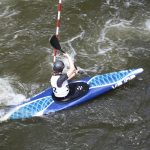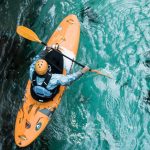In this article, we’ve got all the information you need to decide on the optimal kayak size. Discuss kayak sizes like a pro!
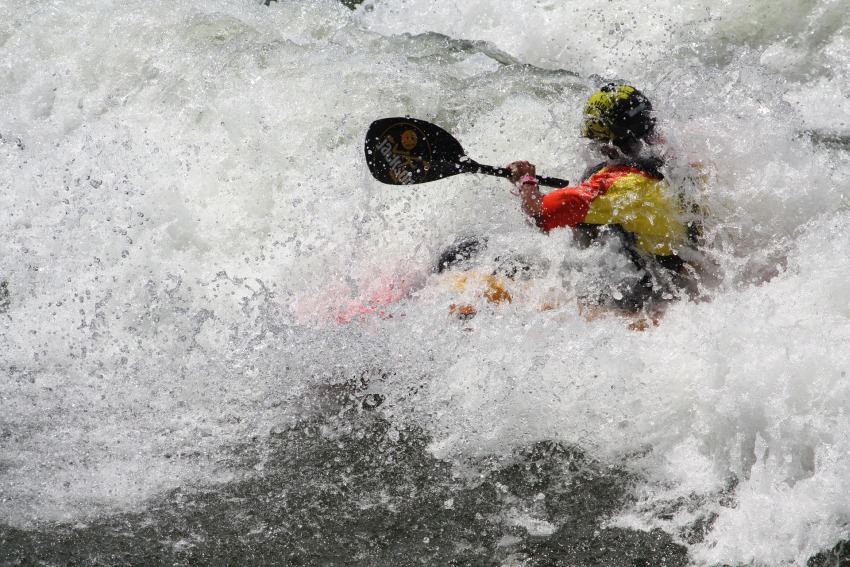
Kayaking is one of the best water sports for people of all ages and skill levels! It’s a sport literally anyone can take up and, with a small amount of practice, enjoy regularly in all kinds of beautiful locations—from rivers to lakes to the open ocean.
Of course, like all water sports, kayaking does come with some inherent risks and dangers. The good news is that these risks and dangers can be mitigated with some preventative measures, preparations, and smart judgement.
Below, we’re going to take a look at what the greatest potential threats are, what you can do to prevent them, and how to kayak as safely as possible. We’ll even answer a few of the most commonly asked questions about kayaking dangers and recommend some simple yet highly effective products that will increase kayaking safety.
So, is kayaking dangerous? It does not have to be. By the time you reach the end of this article, you’ll know everything you need to in order to safely enjoy your next paddling session—and every one thereafter!
How Dangerous Is Kayaking? Real vs. Perceived Risk

Here’s a hard truth: no sport is ever ENTIRELY safe.
You can twist your ankle playing basketball. You can wrench your shoulder throwing a baseball. You can slide off a cliff while snowboarding.
Heck, you can even injure yourself standing up from the couch or walking through your house.
Everything in life comes with risks. The more adventurous the activity, the higher the risks.
But it’s important to understand that not all the risks are real; some are merely perceived.
What does that mean?
A real risk is the actual danger behind an activity.
A perceived risk is how dangerous the activity or situation seems.
The two are sometimes, but not always correlated.
For example, kayaking on a smooth, calm lake may have a low perceived risk. Typically, the real risks are also low. But sometimes that calm-looking lake has submerged obstacles that could cause you to flip over, or heavily muddy banks that act like quicksand to suck you down. The real risks are actually higher than the perceived risks.
On the flip side, ocean kayaking definitely has a higher perceived risk. After all, you’re on the open ocean, where there are sharks and reefs and rip tides and all kinds of hidden dangers, right?
Well, if the ocean is calm, the weather is mild, and you’ve done your homework to make certain there are no currents or wild animals present, the perceived risk is much higher than the real risk.
The key to kayaking safely is to understand the differences between real and perceived risks of anywhere you go. Know the potential dangers you may face when you go kayaking—whether on a river, lake, or the ocean—and be prepared for them. That way, you’ll be ready to react safely in any situation and avoid the dangers inherent in water sports.
The 20 Greatest Dangers of Kayaking
I want to make something perfectly clear to you: you may NEVER face some of the dangers listed below.
For example, if you only kayak on lakes during the summer months, you may never have to worry about cold shock or hypothermia because the water is warm. If you only kayak in the open ocean, you may never encounter low-head dams or weirs.
These dangers are all common, but they vary from location to location. Just because they’re a potential danger, that doesn’t mean they’re something you need to worry about every time you head out for a paddle.
That being said, it’s important that you know about them in advance so you can be prepared and take steps to protect yourself. As you’ll see below, a few smart precautions can mitigate—or even fully avert—some of the greatest dangers you will ever face while kayaking.
1. Dehydration

Would you be surprised to learn that dehydration is one of the most common dangers of kayaking?
I know how odd that sounds. After all, you’re surrounded by water, so it seems impossible that you could get dehydrated.
But remember, all that water is outside the boat. To avoid dehydration, you need to put water inside your body.
Dehydration can be a serious threat to both your athletic performance and your overall safety.
Even a small amount of dehydration will reduce your stamina and cause you to feel fatigued. As one study put it, “A fluid deficit of greater than 2% of an individual’s body mass results in decreased exercise tolerance and is likely to have a negative impact on the sporting performance.”
But what if you’re kayaking for long hours (4+) with no water? If you’re in hot/humid conditions, your risks increase exponentially.
Some of the symptoms of mild dehydration include headaches and muscle cramps, which can make it much harder to paddle. But as the dehydration worsens, the symptoms progress to dizziness, rapid breathing, confusion, lack of energy, and even fainting.
Talk about a recipe for danger on the water!
To avoid dehydration, always bring potable water with you. The longer you’re going to be out on the water, the bigger your water supply needs to be.
For example:
- 1-2 hours of padding = 1-2 liters
- 3-6 hours of paddling = 2-5 liters
- 6+ hours of paddling = up to 10 liters of water
2. Sun Exposure

Sun exposure is one of the primary contributors to dehydration. The brighter and hotter the sun, the more you sweat, so the more water you lose.
Of course, there’s also the risk of sunburn, which can be not only painful, but also accelerate your dehydration, cause a fever, and weaken you to the point of exhaustion.
Long-term skin damage caused by the UV radiation in the sunlight can also contribute to higher risks of melanoma (skin cancer) and promote rapid skin aging (wrinkles, skin lines, sun spots, etc.).
High temperature can also increase your risk of heatstroke. Combined with dehydration, heatstroke can actually be fatal and include symptoms like nausea, vomiting, headaches, dizziness, light-headedness, muscle cramps, and confusion.
To reduce your risk of dangerous sun exposure:
- Lather up with a SPF 50 sunscreen
- Wear long-sleeved shirts and a hat
- Make sure to bring plenty of water to keep you cool and stave off dehydration
- Avoid spending too much time in direct sunlight and high temperatures
3. Hypothermia/Cold Water Shock
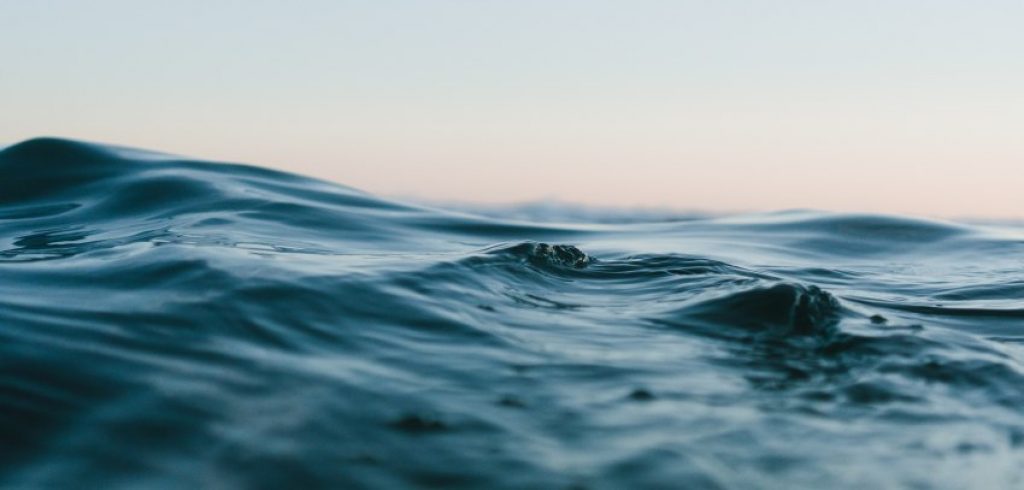
Did you know that cold water can kill you in less than one minute? In fact, it can kill you in seconds!
You see, when you hit the cold water, the frigid or freezing temperatures trigger what’s called a “cold water gasp reflex”. Essentially, your body automatically sucks in a gasp of air in response to the cold.
This may not be a problem if your head is above water when this happens, but what if you’re submerged because your kayak capsized? That cold water gasp reflex will fill your lungs with water rather than air, increasing your risk of drowning exponentially.
Of course, that’s not the only danger of cold water.
Immediately upon hitting the cold water, your body has a hyperventilation-like reaction. Your breathing is fast and deep, uncontrollable, and you get hit with a rush of what could easily turn into panic.
The more time you spend in the water, the greater the risk of hypothermia. In very cold water (around 41 degrees Fahrenheit or 5 degrees Celsius), you have a window of roughly 10-20 minutes before your muscles start to weaken, your strength and coordination decrease, and your core body temperature drops.
When your core temperature drops too low, your organs start to shut down, until cardiac and respiratory failure sets in.
That’s why we highly recommend cold water safety training for all kayakers, whether beginners or experienced. Cold water safety training involves preparing you to be submerged in cold water, helps you learn the equipment you’ll need to survive, and conditions your responses so you know how to act safely from the moment you hit the water.
You can find also find resources on cold water safety from the Canadian Red Cross or the U.S. Coast Guard.
4. Drowning
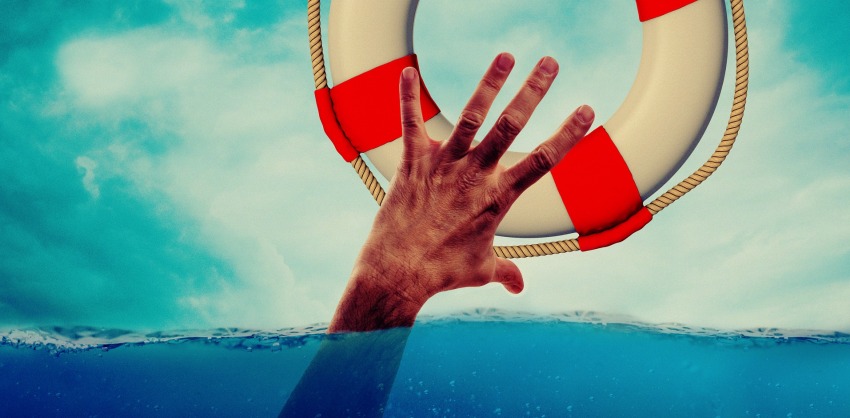
This is a hard truth a lot of people fail to understand: any activity in, on, under, or around water comes with a risk of drowning.
You’ve all heard the warnings about how you can drown in a bathtub filled with just a few inches of water. That’s because it doesn’t take much to drown a person—roughly 1 milliliter of water per kilogram of body weight. Even just that small amount of water can be dangerous if it gets into your lungs.
The CDC reports that roughly 3,500 people die by drowning each year. The average person can hold their breath for anywhere from 30-120 seconds before they inhale water, and after that, it takes just 4-6 minutes to drown.
Scary, right?
It doesn’t have to be.
Using the right personal flotation device can keep you from being submerged for long periods, as the PFD will literally buoy you back up to the surface for a lungful of air.
Learning how to swim, tread water, and hold your breath for at least one minute can also drastically reduce your drowning risk. The truth is that the majority of drowning cases are poor swimmers. Training to become a strong swimmer with good breath control will exponentially increase your safety on the water.
5. Severe Weather/Lightning

When the weather is bad, it’s better to stay off that water. That’s just good sense!
You see, severe weather comes with quite a few risks. The water tends to get choppy, which increases your chances of capsizing. Cold and rain can also raise the risk of hypothermia because your skin is getting wet and chilled even if you never tip over into the water.
And, of course, you know how poorly water and lightning mix! If a lightning bolt strikes the lake, river, or the ocean near where you’re kayaking, you run a very real risk of electrocution.
6. High Speed Winds
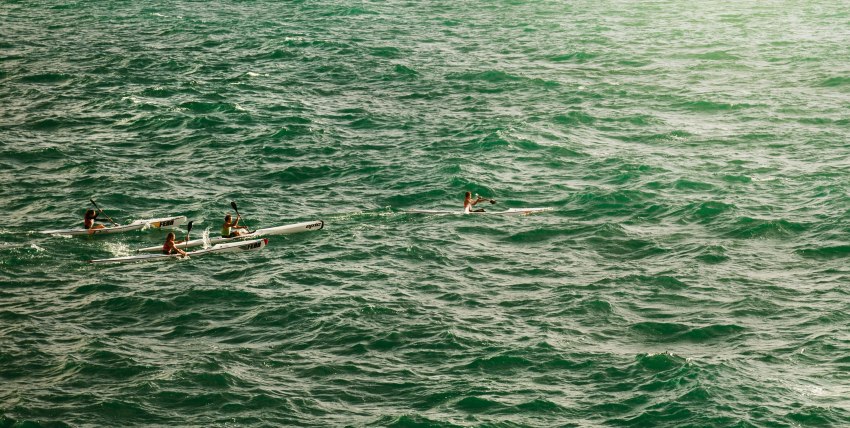
High-speed winds can stir up the surface of the water, turning even the calmest lake choppy. The higher the chop, the greater the risk of capsizing.
Once you’re capsized, choppy water can make it hard to swim to safety, overturn your kayak, and bail out the water.
It’s a serious hazard you should avoid!
Always make sure to check the weather and wind forecast before you head out for a paddle.
7. Getting Lost
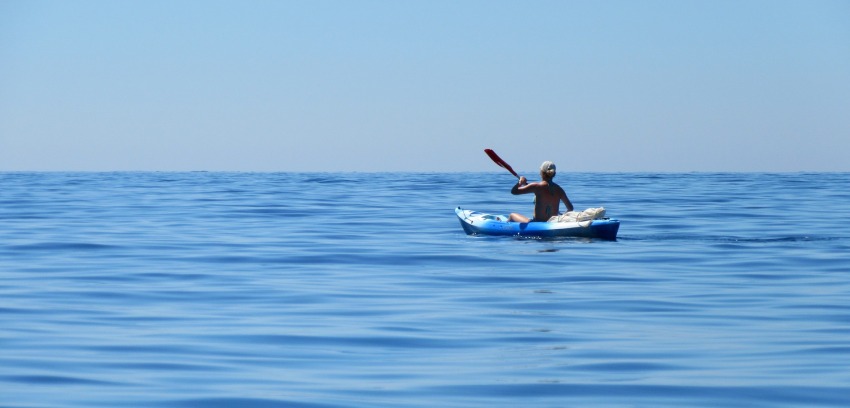
This is a very real danger most commonly faced by ocean kayakers. If you don’t have a way to navigate (such as a waterproof GPS device or compass) and you paddle too far out to see the coast, you could end up getting all turned around and have no way to get safely back to shore.
However, you can also get lost while paddling lakes and rivers. If you’re not careful, the current can carry you far downstream, forcing you to either work double-time to paddle back upstream to your landing spot (where you’ve got your water, food, dry/warm clothing, etc.) or land in thick forest land or a mountainous area where you are too far away from help or rescue.
8. Low-Head Dams/Weirs
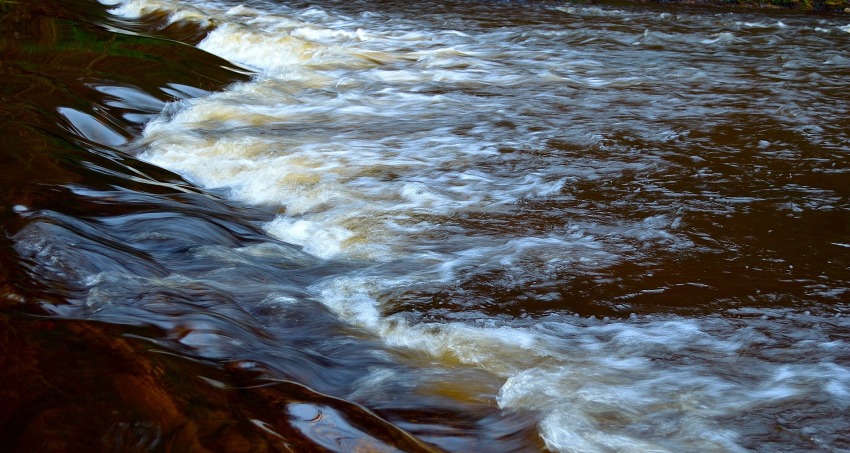
Low-head dams, also known as weirs, are horizontal barriers that stretch across a river or channel. They’re low enough that water can flow over them and cascade down to another level.
It’s important to understand the very real dangers these weirs pose.
They are low enough to allow water to flow over the top, but the fin of your kayak may catch on the dam wall and the water force may capsize you.
Once you’re submerged, you’re in very real danger. Though the surface water is flowing over the wall, the water below is crashing into that wall and being repelled. If you get caught beneath the surface, the water can literally hold you against the weir and prevent you from swimming to the surface.
Avoid low-head dams at all costs!
If you encounter them, it’s highly recommended that you get out of your kayak and carry it (portage) to the lower level rather than trying to paddle down.
9. Capsizing

It’s no surprise to anyone that the safest place to be is in your kayak, above the water level.
If you capsize—due to choppy water, underwater obstacles, or even incorrect handling of the kayak—you’re at the mercy of the water. Not only is your kayak going to fill up and become significantly harder to paddle to safety, but you run the risk of cold water shock and hypothermia.
That’s why it’s so important to avoid situations where you could capsize. Be smart and stick with mild-weather paddling, wear a skirt to prevent water slopping over the sides and into your kayak, and be on the lookout for any submerged obstacles that could tip you over.
10. Waves/Tidal Currents
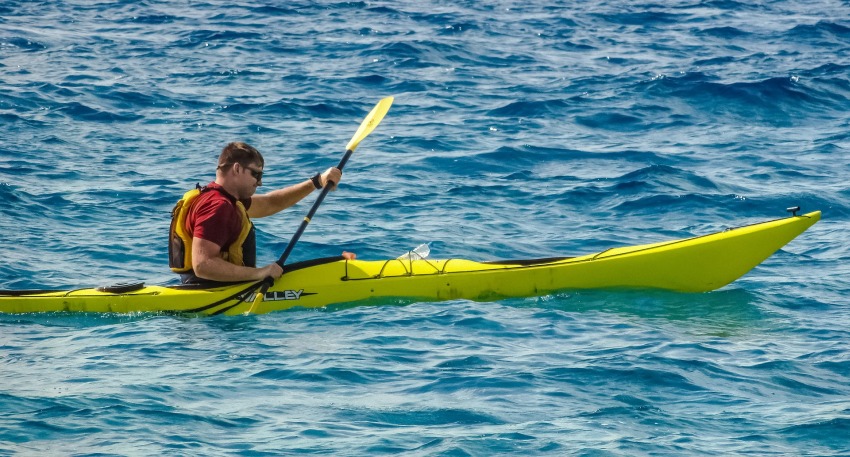
When kayaking on the open ocean, it’s important to be aware of any tidal currents that could drag you out to sea.
Some tidal currents or rip tides can literally pull you dozens of miles away from the shore, putting you in very real danger if you have no food, supplies, or means of navigating back to shore.
Waves can also be a threat. The higher the swells, the greater the risk of your capsizing.
Always check the ocean conditions before going for your paddle. If the swells are high or there is a rip tide warning, come back another day or kayak somewhere safer.
11. Hazardous Obstacles

There are three hazardous obstacles most river and lake kayakers will face at some point in their lives:
Sweepers – These are low-hanging branches or rocks that jut out over the surface of the water.
Strainers – These are fallen trees or rocks beneath the water’s surface. Not only do they pose a capsizing risk, but they act like sieves to funnel all of the river’s debris through one channel. They typically create a dangerous current and undertow.
Undercuts – These are portions of rock walls or river banks that are undercut by the water, creating an overhang that can be dangerous—and often invisible until the last second. The water can literally crush your kayak (and you) against the rock or river bank, making it difficult to extricate yourself. There is also the danger of capsizing and drowning.
Do your utmost to avoid these obstacles!
12. Mud or Swamps
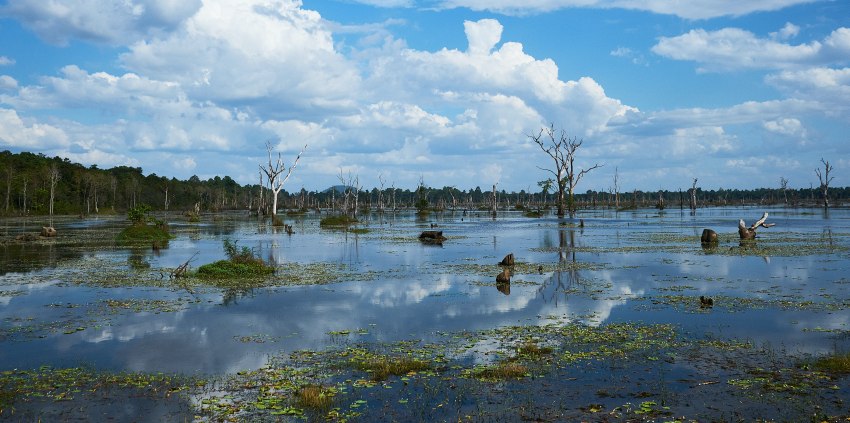
Any area that is very muddy or swampy can be dangerous.
It may pose no serious threat while you’re in your kayak, but if you capsize, tip over, or get out for any reason, that’s when the risk is real.
When you put your weight on the muddy or swampy riverbed (for example, to overturn a capsized kayak or free yourself from a submerged obstacle), the mud can actually suck you down (a quicksand-like effect) and be incredibly difficult to escape.
13. Drunkenness

Boating while impaired is a criminal offense because of how dangerous it is to be on the water with faculties diminished by alcohol (or drugs).
When you’re drunk, your reaction time is slower, your thoughts are muddled, and you are more prone to dehydration, fatigue, dizziness, and heat stroke.
Of course, you’re also at a much higher risk of capsizing because your balance is compromised. You’re more likely to make dangerous, foolish choices when your judgement is impaired by alcohol.
Smart, safe kayakers save the drinking until after they land at shore and are done for the day.
14. Incorrect use of PFD
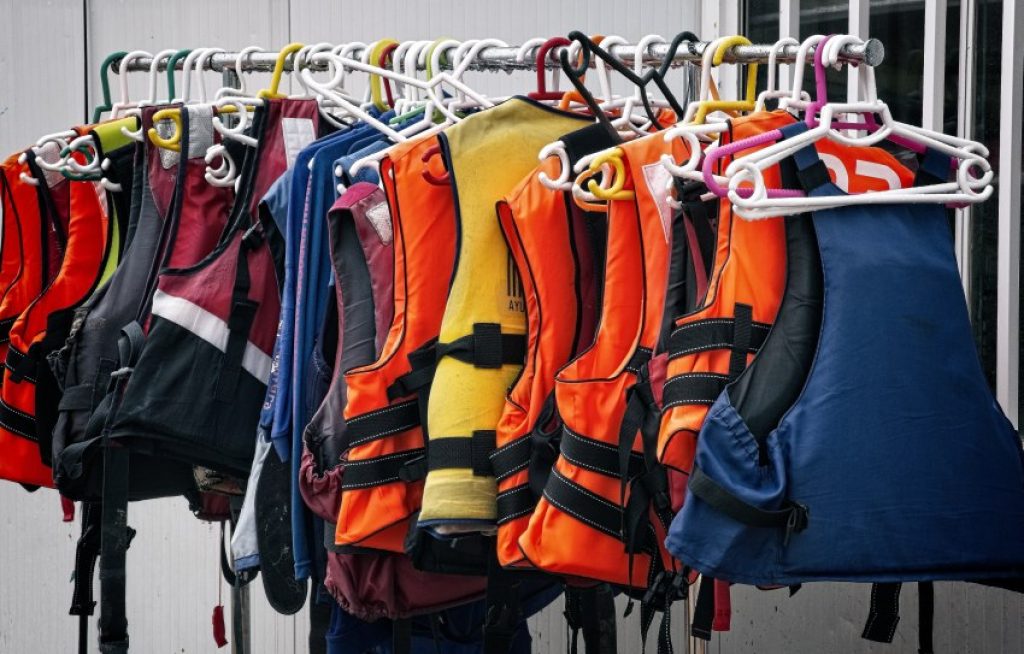
Your Personal Flotation Device (lifejacket) is literally there to save your life!
If you capsize in cold water, get submerged beneath a fast current, or even suffer a muscle cramp or injury, the buoyancy provided by the PFD could be the difference between safe self-rescue and drowning.
You are required by law to at least carry it in your vessel, but what’s the point of having it if you don’t use it? Be smart and wear it at all times.
15. Other Watercraft
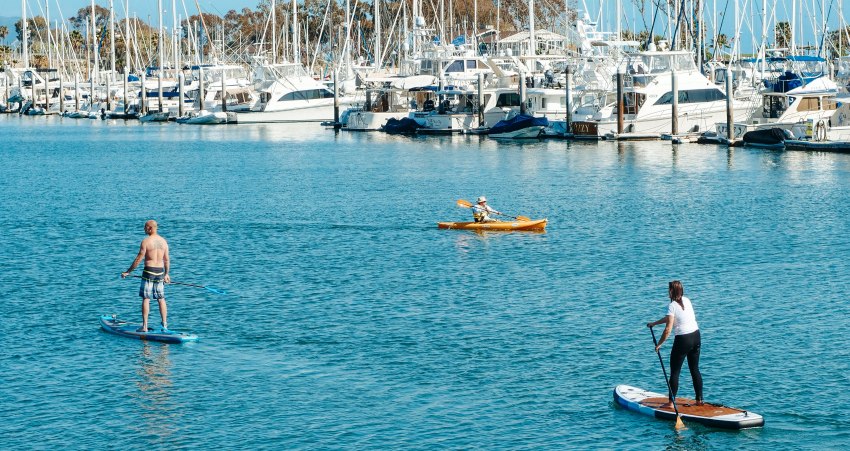
Other boats, kayaks, paddleboards, and canoes can pose a danger to you if the other users are inexperienced or do foolish things.
Motorized boats can create a wake that increases your risk of capsizing, so be aware of that any time a boat passes.
You don’t have to steer wide of fellow kayakers, paddlers, and canoers, but just be conscious of their actions so you can get out of the way of dangers should any arise.
16. Wild Animals
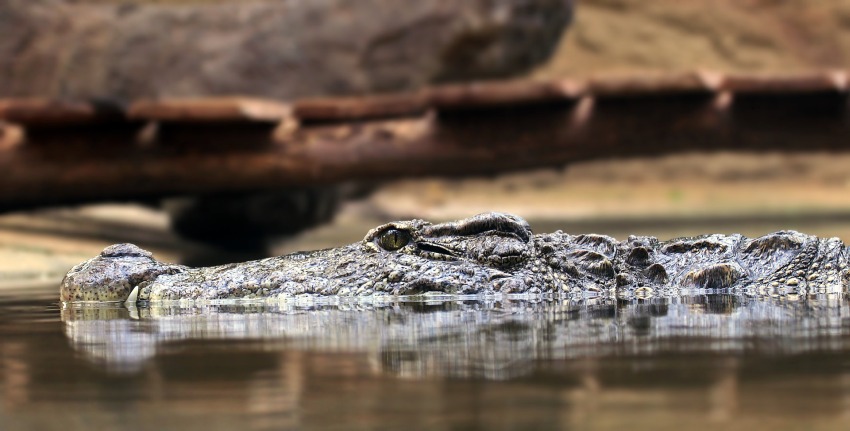
Wild animals are a less-common-but-still-very-real threat to ocean, river, and lake kayakers.
On the ocean, you may encounter:
- Sharks
- Dolphins
- Whales
- Orcas
On the river, you could run into:
- Moose
- Snakes
- Alligators
- Bears
Be aware of any wildlife in the areas where you’re paddling. You should be able to somewhat defend yourself with your paddle, but whenever possible, stay well clear of any animals you encounter on the water.
17. Anything Around your Neck
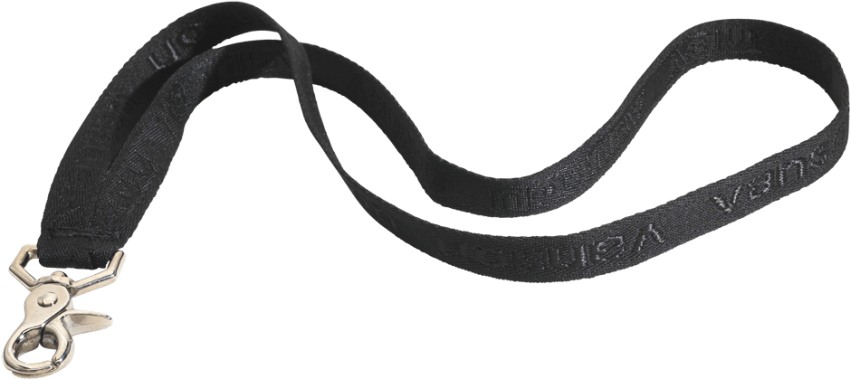
If there is anything hanging around your neck (a lanyard, necklace, a strap, etc.), there is a risk that it could get caught on a submerged obstacle (fallen tree, branch, or rock) and endanger your life.
Never have anything around your neck while kayaking!
18. Sport-Related Injuries

As with any sport, kayaking does run the risk of causing injuries. Because of its low-impact nature, there is little chance of acute injuries (broken bones, torn muscles, dislocated joints, etc.) unless you directly collide with some obstacle below or above the surface (rock wall, overhang, strainer, sweeper, etc.). However, the repeated motion of paddling can lead to repetitive motion injuries in the shoulders, wrists, elbows, and even your neck and back.
One scientific study actually found that the most common paddling-related injuries were in the shoulders (40%), back (26%), wrists and hands (10%), and elbows (9%).
19. Panicking

Panicking in any situation immediately worsens the danger.
When you panic:
- Your breath comes faster
- Your heart races
- You start to shake
- Your muscles weaken
- You’re more prone to hasty action
- You have a harder time thinking clearly
Panic will make it exponentially harder to self-rescue should you find yourself in danger. It’s absolutely imperative that you keep your calm and stay in control of yourself no matter how dire the situation.
20. Inexperience
Last but certainly not least, inexperience is a very real danger!
If you try to paddle above your ability level, you may find yourself in a hazardous situation that you’re not prepared or experienced enough to escape.
If you paddle in unfamiliar locations, you could end up lost or in serious danger.
If you’re kayaking in unknown waters, you might find yourself dragged down or out by hidden currents.
Always paddle at your ability level, and do a lot of research before paddling somewhere new.
How to Kayak Safely
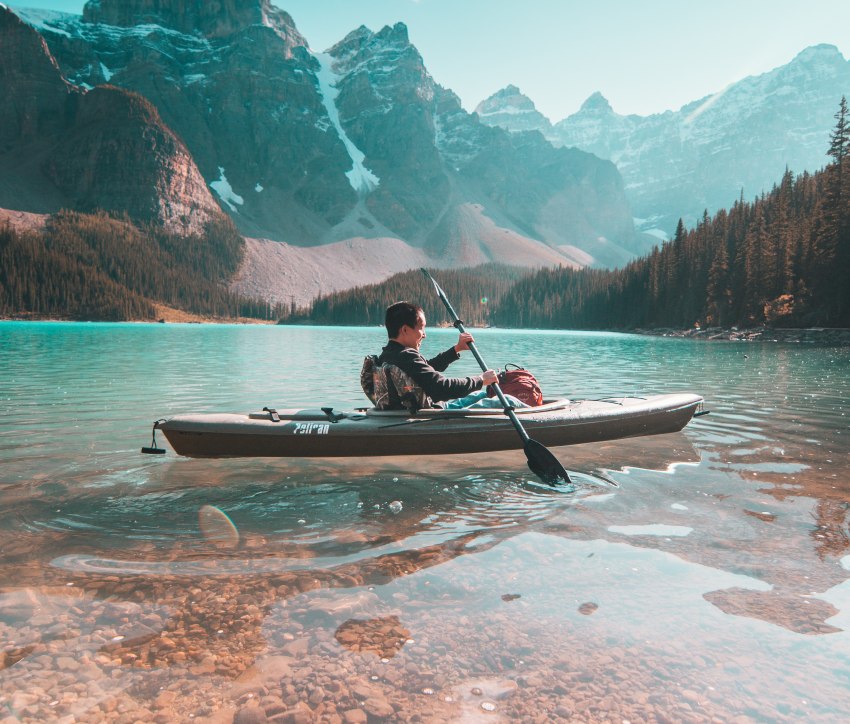
Here are our top tips to help you be safe when you kayak:
● Always check your equipment before you go. Make sure your equipment (kayak, paddles, and PFD) is in good condition, with no holes or leaks that could let in water or cracks that could hinder proper use.
● Dress appropriately for the weather. If you’re kayaking in cold-weather or cold-water conditions, consider using a drysuit or wetsuit to stay warm. On sunny days, wear a long-sleeved shirt and hat to protect you from sunburn and dehydration.
● Practice re-orienting and draining a flipped kayak. This is a skill that is imperative to master should you find yourself capsized.
● Practice re-entering your kayak from the water. You won’t always have the shore nearby to make it easy to enter your kayak. It’s worth practicing re-entering your kayak from deep water.
● Check the weather report, winds especially. If the weather is ugly or the winds are high, consider kayaking elsewhere.
● Be wary of obstacles. Make sure to keep an eye on your surroundings at all times—not only above the surface but also for any hidden, underwater obstacles that could capsize your vessel.
● Always use lights in the dark. Bring a headlamp or flashlight with you if you’re going to be out on the water after nightfall.
● Wear a helmet in rough water. Typically, it’s recommended to use a helmet on the ocean or on a rough river.
● Tell someone about your plans. Make sure someone knows where you’re going and when you plan to return. You’ll need them to call 911 should you find yourself in trouble.
● Avoid boat ramps. They tend to be slippery, and you could injure yourself just trying to climb into the kayak. Mount from the shore whenever possible.
Smart Products to Maximize Kayak Safety
Here are our top-rated products to keep you safe on the water:
NRS Chinook Fishing Kayak Lifejacket – This US-made PFD will keep your head above water. Thanks to the multiple adjustment points, it will be easy to adapt to fit your body. Plus, it’s got tons of pockets for additional safety devices like a compass or even foodstuffs.
attwood Bailer Safety Kit – This kit comes with a flashlight, whistle, rope, float, reflective signal mirror, and a bailer bucket—all equipment you’ll need in case of an emergency. Keep this in your kayak at all times!
Garmin GPSMAP 64 – This GPS device is waterproof up to 1 meter for 1 hour, enough for you to reorient a capsized kayak and get your bearings. With this bad boy in your kayak, you’ll never get lost at sea.
LifeStraw Personal Water Filter – Just in case you find yourself in the middle of a river or lake with an empty water bottle, this water purification straw will ensure you always have plenty of water to stay hydrated in a pinch.
In Conclusion
Kayaking does come with its own inherent dangers, but as you’ve seen above, many of those dangers can be mitigated or prevented by taking a few simple precautions. Out of all the water sports, kayaking can be one of the safest and most enjoyable. Be smart, make safe choices, and you’ll have many years of paddling to look forward to!
FAQs
It isn’t more dangerous to kayak alone, provided you have all the necessary safety equipment and are strong enough to move/lift/transport your kayak without help. However, if you’re kayaking alone, make sure to tell a friend or family member where you’re going, how long you’ll be out, and when you intend to return. Consider using an app on your smartphone (stored in your drybag) so your location can be tracked for your own safety.
Absolutely 100% important! The kayak weight limit tells you how much weight the vessel can hold while still floating at the proper level above the water. If you add too much weight, the kayak will ride low in the water and can fill up—leading to a higher risk of capsizing.
When the weather is bad! Pay attention to any heat warnings, smoke/wildfire warnings, storm/thunderstorm forecasts, high wind warnings, or cold weather predictions.
It absolutely is. If you cannot swim, getting out on the water—even in a stable kayak—can be dangerous because you’ll be unable to save yourself if you capsize. It’s highly recommended that non-swimmers learn to swim before they take up kayaking.
Tandem kayaks are wider and more stable than single-person kayaks, meaning they’re less prone to capsizing. However, if one of the kayakers panics, they could put both in danger.
Under the right paddling conditions (mild weather, calm water) and with proper experience, you won’t have to ever worry about tipping or flipping in a well-balanced kayak sized properly for its user. However, the more adverse the conditions, the greater the risk.



